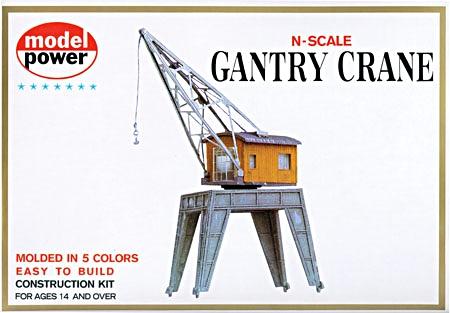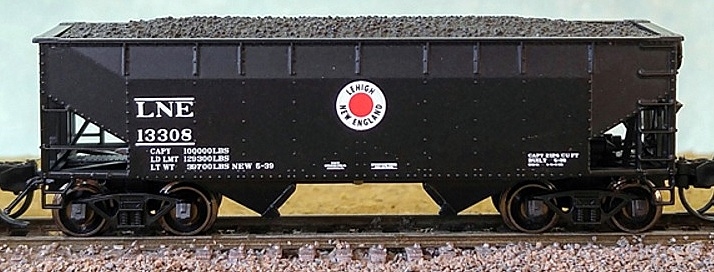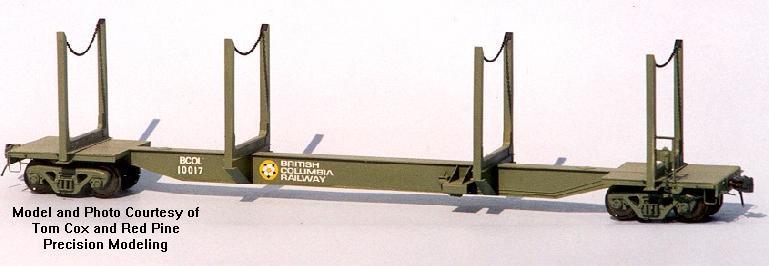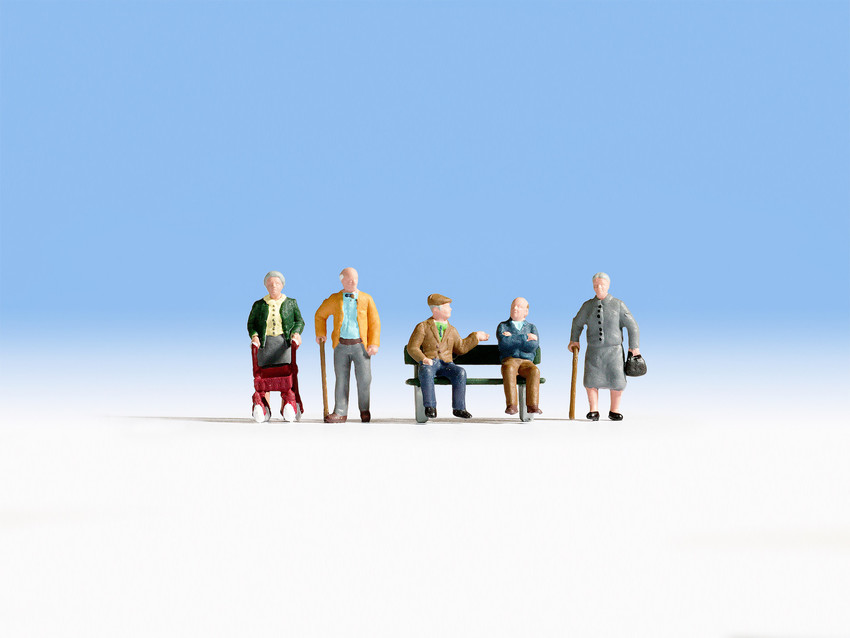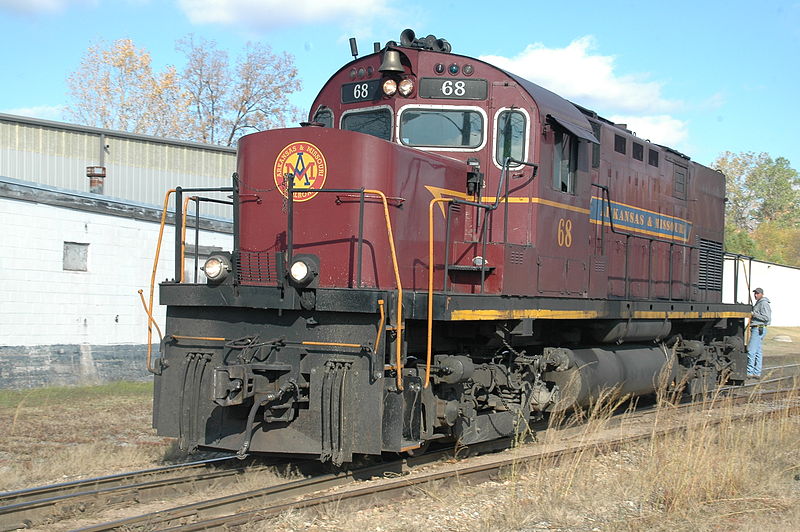Body Style Information: With etched metal radiator walkways, fine-scale handrails, see-through step detail on sills, and painted crew members, the Atlas Model Railroad Alco Century 420 diesel locomotives have an array of separately-applied scale detail parts like cab sun shades, coupler cut levers, drop steps, handrails, metal grab irons, multiple-unit hoses, train line hoses, and windshield wipers.
For optimum performance at all speeds, the models are driven by five-pole skewed armature motors, with dual flywheels.
The C420s have directional lighting and golden-white LEDs.
Decoder-Ready, Atlas Master Series Silver models are fitted with an NMRA 8-pin plug for DCC use.
With authentic sounds, Atlas Master Series Gold models are fitted with dual-mode decoders that run on DCC, or traditional DC equipped layouts.
For optimum performance at all speeds, the models are driven by five-pole skewed armature motors, with dual flywheels.
The C420s have directional lighting and golden-white LEDs.
Decoder-Ready, Atlas Master Series Silver models are fitted with an NMRA 8-pin plug for DCC use.
With authentic sounds, Atlas Master Series Gold models are fitted with dual-mode decoders that run on DCC, or traditional DC equipped layouts.
Prototype Information: ALCo built a total of 131 Century 420 locomotives between 1963 and 1969, when the builder ceased all new locomotive production. Powered by a 12-cylinder, turbocharged, 2,000-hp 251-series prime mover, the C420’s direct competitor in 1963 was the EMD GP18. In fact, EMD did not offer a 12-cylinder, 2,000-hp prime mover until the GP39 model was produced in 1969. The shorter 12-cylinder engine block allowed the C420 to have its distinctive set-back cab and extended short hood.
The first road to purchase the C420 was the Lehigh & Hudson River, with its first two units built in 1963. The largest fleet was purchased by the Long Island Railroad, with 30 units built between 1963 and 1968. All were equipped with a high short hood which housed a steam generator for passenger service. Over time, the largest fleet of C420s was amassed by the Louisville & Nashville. While only 26 units were purchased new, their total fleet grew to well over 60 units through mergers and acquisitions. The C420 can still be found in daily service today in the US. Currently the largest fleet of C420s is operated by the Arkansas & Missouri Railroad.
The first road to purchase the C420 was the Lehigh & Hudson River, with its first two units built in 1963. The largest fleet was purchased by the Long Island Railroad, with 30 units built between 1963 and 1968. All were equipped with a high short hood which housed a steam generator for passenger service. Over time, the largest fleet of C420s was amassed by the Louisville & Nashville. While only 26 units were purchased new, their total fleet grew to well over 60 units through mergers and acquisitions. The C420 can still be found in daily service today in the US. Currently the largest fleet of C420s is operated by the Arkansas & Missouri Railroad.
Road/Company Information:  The L&HR was established as an extension of the Warwick Valley Railroad and the two were merged as the Lehigh & Hudson River Railway in 1882. Ultimately the line would run from Easton, Pennsylvania through northwest New Jersey to Maybrook, New York just 97 miles away.
The L&HR was established as an extension of the Warwick Valley Railroad and the two were merged as the Lehigh & Hudson River Railway in 1882. Ultimately the line would run from Easton, Pennsylvania through northwest New Jersey to Maybrook, New York just 97 miles away.
Despite its small size, the L&HR was an important bridge carrier. This was due to the fact that bridges over the Hudson River are few and far between. The L&HR funneled traffic from Jersey Central, Lackawanna, Erie, Lehigh Valley, Pennsylvania Railroad and Reading at Easton, to the New Haven at Maybrook. The New Haven crossed the Hudson on their Poughkeepsie Bridge. This was a shortcut from the Mid-Atlantic States to New England. The connecting lines at Easton split ownership of the L&HR.
L&HR’s early 20th Century steam fleet was dominated by camelbacks of 2-8-0 and 4-6-0 arrangements. Eight Mikados followed with standard cabs and Wooten fireboxes to burn anthracite mined in the area. Oddly enough, the Mikes were followed by 2-8-0’s. These were no ordinary Consolidations though. They were massive, with fireboxes the same size as those on Nickel Plate’s Berks and bigger than Reading’s T-1 Northerns! From a tractive effort standpoint, they nearly matched a USRA 2-10-2. A need for more speed brought a trio of 4-8-2 Mountains that were copies (right down to the tender) of Boston & Maine’s Mountains.
L&HR dieselized in 1950 with 13 Alco RS-3’s (set up for long hood forward operation as was the case more most RS-3’s.) These units were dark green with gold striping. These were replaced between 1963 and 1969 by nine Alco C420’s, delivered in blue and gray.
Things started to go wrong in 1960 with the Erie Lackawanna merger. Erie had their own connection to New Haven and began diverting EL traffic to that route. In 1968, the Penn Central merger diverted considerable traffic from the L&HR. PC used their yard at Selkirk near Albany to sort everything going to or from New England and that meant crossing the Hudson near there. A few months after the PC merger, New Haven was folded into PC stripping L&HR of their only friendly connection on the east end. PC had agreed to preserve service on this gateway as one of many conditions for their merger. However, they stopped maintaining the Poughkeepsie Bridge. In 1972, with bridge traffic at a trickle and few on-line customers, L&HR declared bankruptcy. The final straw was two years later when a fire knocked out the Poughkeepsie Bridge. Lehigh & Hudson River was included in the 1976 Conrail consolidation.

Despite its small size, the L&HR was an important bridge carrier. This was due to the fact that bridges over the Hudson River are few and far between. The L&HR funneled traffic from Jersey Central, Lackawanna, Erie, Lehigh Valley, Pennsylvania Railroad and Reading at Easton, to the New Haven at Maybrook. The New Haven crossed the Hudson on their Poughkeepsie Bridge. This was a shortcut from the Mid-Atlantic States to New England. The connecting lines at Easton split ownership of the L&HR.
L&HR’s early 20th Century steam fleet was dominated by camelbacks of 2-8-0 and 4-6-0 arrangements. Eight Mikados followed with standard cabs and Wooten fireboxes to burn anthracite mined in the area. Oddly enough, the Mikes were followed by 2-8-0’s. These were no ordinary Consolidations though. They were massive, with fireboxes the same size as those on Nickel Plate’s Berks and bigger than Reading’s T-1 Northerns! From a tractive effort standpoint, they nearly matched a USRA 2-10-2. A need for more speed brought a trio of 4-8-2 Mountains that were copies (right down to the tender) of Boston & Maine’s Mountains.
L&HR dieselized in 1950 with 13 Alco RS-3’s (set up for long hood forward operation as was the case more most RS-3’s.) These units were dark green with gold striping. These were replaced between 1963 and 1969 by nine Alco C420’s, delivered in blue and gray.
Things started to go wrong in 1960 with the Erie Lackawanna merger. Erie had their own connection to New Haven and began diverting EL traffic to that route. In 1968, the Penn Central merger diverted considerable traffic from the L&HR. PC used their yard at Selkirk near Albany to sort everything going to or from New England and that meant crossing the Hudson near there. A few months after the PC merger, New Haven was folded into PC stripping L&HR of their only friendly connection on the east end. PC had agreed to preserve service on this gateway as one of many conditions for their merger. However, they stopped maintaining the Poughkeepsie Bridge. In 1972, with bridge traffic at a trickle and few on-line customers, L&HR declared bankruptcy. The final straw was two years later when a fire knocked out the Poughkeepsie Bridge. Lehigh & Hudson River was included in the 1976 Conrail consolidation.
Brand/Importer Information: In 1924 Stephan Schaffan, Sr. founded the Atlas Tool Company in Newark, New Jersey. In 1933 his son, Stephan Schaffan, Jr., came to work for his father at the age of sixteen. Steve Jr. built model airplanes as a hobby and frequented a local hobby shop. Being an enterprising young man, he would often ask the owner if there was anything he could do to earn some extra spending money. Tired of listening to his requests, the hobby-store owner threw some model railroad track parts his way and said, "Here, see if you can improve on this".
Atlas has made a ton of wonderful products throughout the years and we often get questions one whether we have run a certain road name on a particular model. It should be noted that Atlas locomotives and rolling stock are greatly appreciated for their superior operating and running characteristics. Atlas products are also well known for their outstanding collectability not only due to their superior prototypical workmanship, details and decoration, but because there are relatively so few of them made. Each and every production run has been carefully built to market demand, meaning almost every piece in any given run is sold out by Atlas on arrival or shortly thereafter, thus creating a built in collectors market.
Atlas has made a ton of wonderful products throughout the years and we often get questions one whether we have run a certain road name on a particular model. It should be noted that Atlas locomotives and rolling stock are greatly appreciated for their superior operating and running characteristics. Atlas products are also well known for their outstanding collectability not only due to their superior prototypical workmanship, details and decoration, but because there are relatively so few of them made. Each and every production run has been carefully built to market demand, meaning almost every piece in any given run is sold out by Atlas on arrival or shortly thereafter, thus creating a built in collectors market.
Item created by: nscalemodeler160 on 2016-08-02 11:08:54. Last edited by gdm on 2020-05-23 15:56:04
If you see errors or missing data in this entry, please feel free to log in and edit it. Anyone with a Gmail account can log in instantly.
If you see errors or missing data in this entry, please feel free to log in and edit it. Anyone with a Gmail account can log in instantly.





